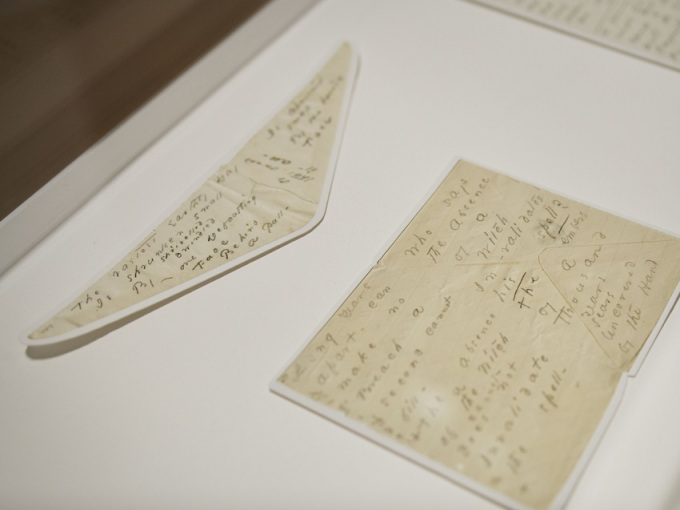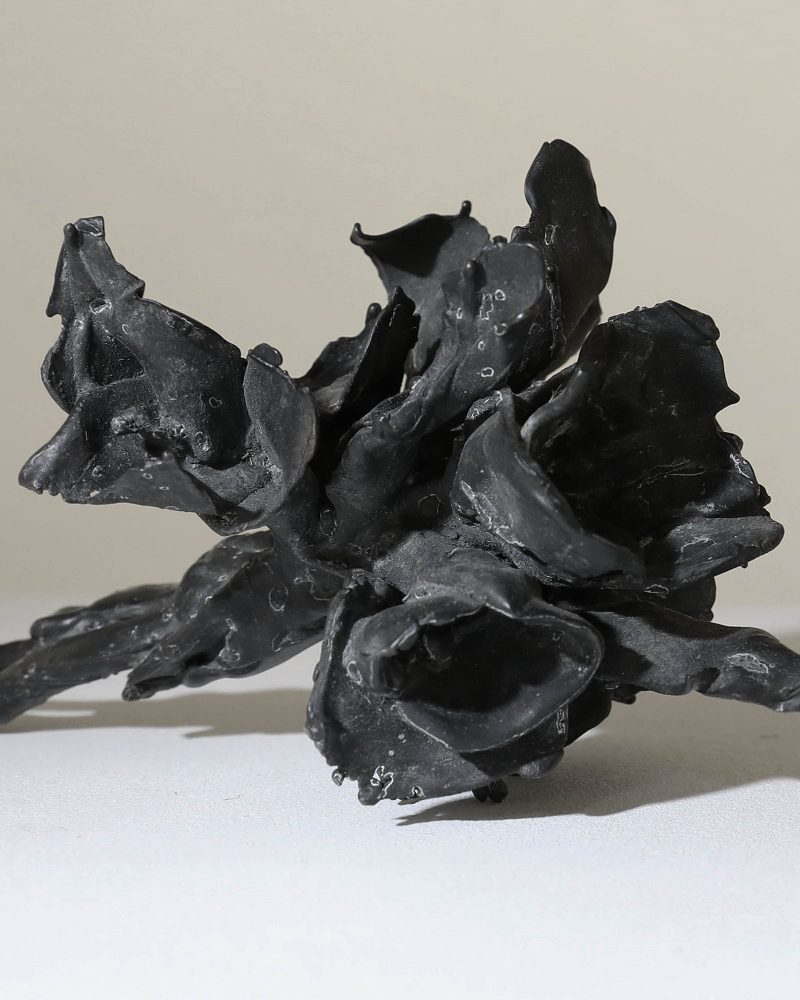Daphne Wright, Freud and the poems of Emily Dickinson

I am walking across my friend Susan’s porch. It is a balmy summer night in Pennsylvania. Susan’s house is nested in a densely wooded area and the nightsounds of the living forest are as thick as the air. I am thinking about Lucian Freud and Emily Dickinson; about DaphneWright, Timothy Morton, Derrida, Heidegger, Ottoline Leyser and Johnny Cash; about how these various artists and thinkers are linked; trying to gather them into an explainable bundle, grasping across hundreds of years, thousands of miles, and a dozen different disciplines. Then it happens. I stride face first through the invisible gossamer strands of a spider’s web. I have it. “The Ethics of Scrutiny” is a web in four dimensions. A hyper-web.
Just as Morton explains the concept of a hyperobject, or Carl Sagan explains the idea of a tesseract, Daphne Wright’s curation of IMMA’s Freud Project, “The Ethics of Scrutiny”, has transcended our ability to perceive its limits. We move within the show in both time and place, and it all begins with Dickinson’s “envelope poems”.
These arcane scraps of paper ensconced between poetry, sculpture, and diary, which challenge our understanding of Dickinson and the myth culture has built of her biography, are the totems of Daphne Wright’s curatorial sensibilities employed to arrange “Ethics”. The objects themselves embody what Martin Heidegger terms the “always–already”, and Wright has deftly positioned them in the opening room of the gallery, juxtaposing them with images of plantcells and neural networks drafted by Sigmund Freud, Lucian’s grandfather.

This is the node, the centre of the invisible web which connects all the pieces in this show. Wright is hinting at us; suggesting a language that reaches across time and discipline to equip us with new tools we as viewers can employ to scrutinise the canvasses of Lucian Freud. And though the strands connecting Ottoline Leyser’s interview about plant epigenetics to John Berger’s “Ways of Seeing” to Johnny Cash’s “Hurt” do not announce themselves, they ensnare us in a web of meanings, and as you walk through the gallery you can feel these links like unanticipated spider silk across the face. They are the spokes of a web leading from Dickinson’s “Gorgeous Nothings” along new avenues of meaning to the manifold ways we can see into the canvasses of Lucian Freud.
As Dickinson herself writes in poem 1383, whose UMass Amherst archival envelope facsimile is on display in the vitrine in room one of “Ethics”: “Long years apart – make no/ Breach a second cannot fill -/ The absence of the Witch does not/ Invalidate the spell-//”. And indeed, Daphne Wright has curatorially performed a strange magic, illuminating new meanings of Freud through skilful and deliberate juxtapositions against a cadre of contemporary artists and an array of thinkers throughout time and place. The show lives in time like a forest, continually in a state of contextual flux. Leaving “The Ethics of Scrutiny” you almost have to wipe the threads of these subtle connections off your face like spider silk in order to re-enter normal time.
As we reach the final days of this remarkable exhibition I have had the pleasure to spend many hours in. I would strongly recommend you come spend some time herein this place before it changes over again. I leave with you with following quote to take into the galleries before the show closes on Sunday 2 September 2018: “Place doesn’t stay still, but bends and twists: place is a twist you can’t iron out of the fabric of things.” ¾ Timothy Morton, Dark Ecology.
Categories
Further Reading
Slow Looking & Porous Links in The Ethics of Scrutiny in The Ethics of Scrutiny
Writer and researcher Sue Rainsford sits down with artist Daphne Wright to explore her curation of the IMMA Collection: Freud Project exhibition Ethics of Scrutiny.
Homecoming: Frank Bowling and Lucian Freud
We invited Dr Nathan O'Donnell, currently IRC Enterprise Postdoctoral Research Fellow in connection with the IMMA Collection: Freud Project, to write on the relationship between Lucian Freud and Frank Bowling.
Landmark Lucian Freud Project and 2016 programme
IMMA announces landmark Lucian Freud Project for Ireland alongside an expanded 2016 programme of new work celebrating the radical thinkers and activists whose vision for courageous social change in Ireland a...
Behind the Blink. Freud Project Advertising Campaign
To celebrate the exhibition IMMA Collection: Freud Project, we asked advertising agency Irish International BBDO to create a 20 second advertisement that would capture the feeling of seeing a Freud work in t...
Up Next
Slow Looking & Porous Links in The Ethics of Scrutiny
Fri Aug 24th, 2018